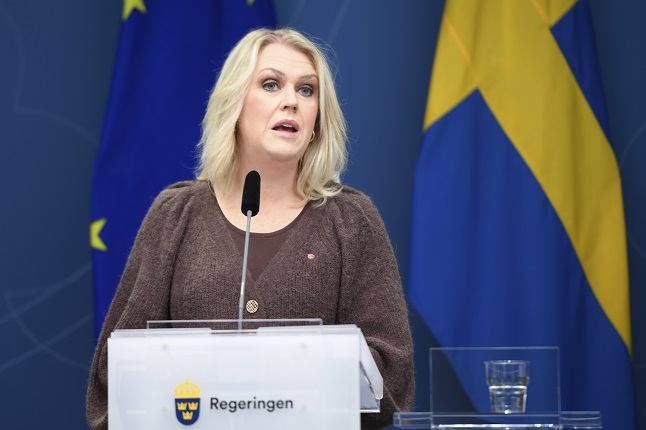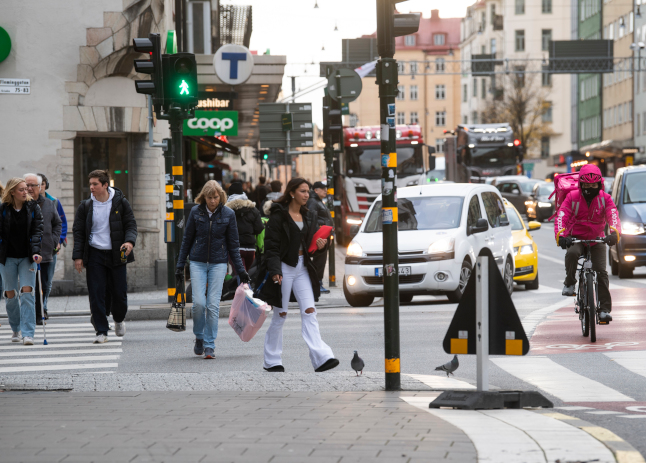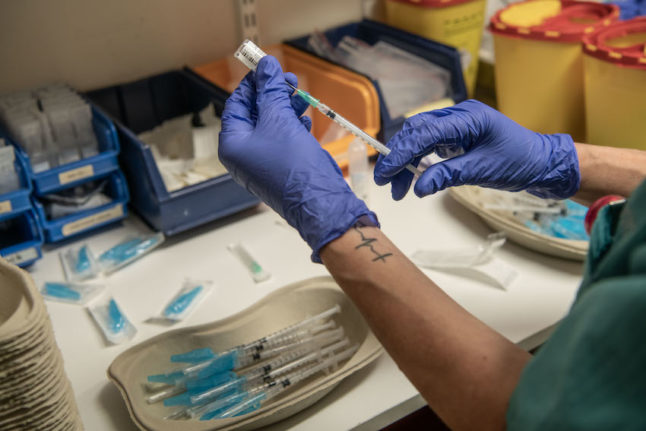The measures apply in ten of Sweden's 21 administrative regions and, although varying slightly by region, include factors such as recommendations to avoid indoor environments like shops and contact with people other than those you live with.
These measures have a legal basis as part of Sweden's law on infectious diseases, but they are strong recommendations rather than laws. Members of the public are also intended to take some personal responsibility in deciding how to apply them to their circumstances: they recommendations include the wording “if possible” and people living alone in Sörmland, for example, have been told they may continue to socialise with one or two individual friends.
In countries such as the UK and France, tiered or regional measures have been replaced by national lockdowns after coronavirus cases continued to rise.
Could Sweden be on the same path?
A senior infection doctor in Uppsala, the first region to introduce stricter local measures, called for a nationwide lockdown on national TV on Thursday.
Doctor Fredrik Sund told SVT: “We have seen over the past few weeks that the recommendations are not followed. With the spread of infection as it is, it's like we in Sweden are in free fall […] we talk a lot about timing and I think we have the chance [to introduce harsher restrictions] now. In a few weeks it will be pointless.”
Minister for Health and Social Affairs Lena Hallengren responded on Monday by saying that, while the term 'lockdown' can be used to describe several different scenarios, Sweden is already “on the way to shutting down large parts of our society” by the implementation of the new local restrictions.
There are three key things that will determine the next steps in Sweden: the legal framework, the reasons why Sweden has opted to avoid a lockdown so far, and the epidemiological situation.

Health and Social Affairs Minister Lena Hallengren said Sweden was “on the way to shutting down large parts of our society”. Photo: Amir Nabizadeh/TT
Firstly, there are legal difficulties to imposing a full lockdown in Sweden, a country without a framework for a legal state of emergency in peacetime.
This has frequently been cited as a reason Sweden has instead relied on recommendations, but the country does have the possibility to go further within existing laws.
During spring, the government was granted faster decision-making powers which meant it could impose measures like ordering closure of schools, shops, restaurants or other businesses, either regionally or nationally, without having to go through parliament.
This temporary law expired in July without ever being used, but is an example of how Sweden does have the possibility to introduce stricter measures than those currently used.
The greater barrier to doing this is the fact it would be a marked shift in the strategy.
Swedish authorities have, throughout the pandemic, said they don't think strict laws and fines would be effective in Sweden. Early on, this strategy was at least partly based on hopes the country could build up a 'herd immunity', emails between officials suggest, and this is something that hasn't happened.
But state epidemiologist Anders Tegnell has also said he believes a strategy based on recommendations is the most effective one for Sweden and expressed doubts that stricter rules would work.

People walking in central Stockholm this week. Photo: Fredrik Sandberg/TT
Still, however reluctant the Public Health Agency and government may be to switch to harsher measures, it is possible they will not have a choice.
If the sharp upward trend in new cases continues – and if this leads to more cases of serious illness, death, and an overburdened healthcare sector – Sweden may need to introduce stricter measures.
Whether that means tightening the local restrictions further, or extending them across the country, would likely depend on how the spread of the virus develops.
Currently, many parts of northern Sweden have a low level of spread of the coronavirus, helped by very low population density. If this trend continues, the Public Health Agency is unlikely to extend measures across the whole country, having previously said it plans to introduce any future measures at a local level.
Instead, local measures are likely to be introduced in any further regions that show worrying rises in cases and hospital treatment, such as Västmanland which has already said it is mulling such a move.
As for whether the recommendations will ever be tightened further or supplemented by legally binding restrictions, that is likely to depend on the development of the epidemic as Sweden heads into winter, and the extent to which people change their behaviour based on the recommendations alone.



 Please whitelist us to continue reading.
Please whitelist us to continue reading.
If people don’t follow the existing guidelines, I can’t see how introducing more recommendation solves the problem. And going nuclear with legally enforcebale restrictions would make things even worse.